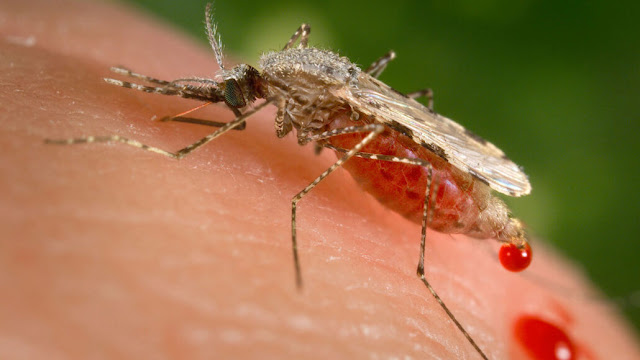Malaria could become a much bigger problem in African cities if the mosquito population continues to grow.
 |
| Anopheles stephensi is an invasive mosquito in Africa that threatens to cause malaria outbreaks in urban areas. PUBLIC HEALTH IMAGE LIBRARY OF THE CDC |
Malaria cases in the Ethiopian city of Dire Dawa spiked in early 2022, sickening over 2,400 people. According to scientists, the increase in infections was caused by an invasive mosquito species that is spreading across Africa.
The discovery announced on November 1 at the annual meeting of the American Society of Tropical Medicine and Hygiene in Seattle, provides evidence that the invasive vector can cause malaria outbreaks. Worryingly, the species can thrive in urban environments, potentially exposing millions more people to malaria across the continent.
Anopheles stephensi is a mosquito that is native to India and the Persian Gulf and is a major vector for Plasmodium parasites that cause malaria in humans (SN: 10/26/20). Anopheles gambiae is the primary malaria vector in Africa. A. stephensi was first discovered in Africa in Djibouti in 2012. Since then, the species has been discovered in Ethiopia, Somalia, and Nigeria, among other African countries.
According to Fitsum Girma Tadesse, a molecular biologist at the Armauer Hansen Research Institute in Addis Abeba, Ethiopia, it was unclear what kind of malarial burden the invasive mosquito could bring to Africa. Tadesse claims that in the eight years following the mosquito's arrival in Djibouti, the country saw a 40-fold increase in yearly malaria cases. However, no one had directly linked A. stephensi to the rise.
So, when malaria cases in Dire Dawa suddenly increased — from 27 to 260 in just three weeks in early 2022 — Tadesse and his team jumped in to investigate.
The researchers followed 80 patients in the city who sought malaria treatment at a local or university clinic, as well as 210 patients who sought treatment for other reasons, and screened the patients' household members for malaria. The team also checked the patients' neighborhoods for the presence of mosquito adults and larvae within a 100-meter radius of their homes, or dormitories in the case of students who visited a clinic.
The researchers discovered that the malaria patients lived primarily near water sources used by the invasive mosquito, Aedes stephensi. Households and dorms near aquatic habitats harboring A. stephensi larvae were 3.4 times more likely to have a family or dorm member test positive for malaria than those not near such water sources. And the majority of the adult mosquitoes caught by the team — 97 percent — were of the invasive species, the only mosquito species found to be carrying Plasmodium parasites.
Tadesse claims that A. stephensi "prefers to breed in water storage containers that are typically common in rapidly expanding urban settings." He adds that the native mosquito species, Aedes gambiae, prefers natural sources of water such as small pools, which are more common in rural areas. The concern is that as A. stephensi spreads alongside urbanization in Africa, the mosquito may exploit many new sources of water storage.
"This shifts the malaria problem from being primarily rural to being primarily urban," says Teun Bousema, an epidemiologist at Radboud University in Nijmegen, the Netherlands.
Another research group estimated that if the invasive mosquito spreads widely across the continent, an additional 126 million people in cities could contract malaria.
"The spread of Anopheles stephensi is concerning because this species has a number of characteristics that make control difficult," says Tanya Russell, a medical entomologist at James Cook University in Townsville, Australia, who was not involved in the study. The insects can not only lay their eggs in almost any available water source, but the eggs can also survive being dry for long periods of time. "This is very unusual for malaria vectors."
According to Russell, the primary vector control strategies for malaria-carrying mosquitos are insecticide-treated bed nets and indoor spraying of a residual insecticide. However, because A. stephensi also bites outside, the mosquito's spread may reduce the effectiveness of these tools.
The key next steps, according to Tadesse, are interventions to reduce mosquito transmission, such as chemically targeting the mosquito's larval phase and encouraging communities to cover and secure water containers to prevent mosquitoes from laying eggs in them.
"The window of opportunity to act on this species is closing," says Bousema. "As a result, I believe this requires immediate action."
CITATIONS
T. Emiru et al. Anopheles stephensi has been linked to a recent malaria outbreak in Dire Dawa City, Ethiopia. The American Society of Tropical Medicine and Hygiene's 2022 Annual Meeting will be held in Seattle on November 1, 2022.

